Unlock the Health Benefits of Organic Matcha Green Tea Powder Today!
Discover the health benefits of organic matcha green tea powder! Packed with antioxidants, caffeine, and flavor, it's perfect for lattes, smoothies, and more!
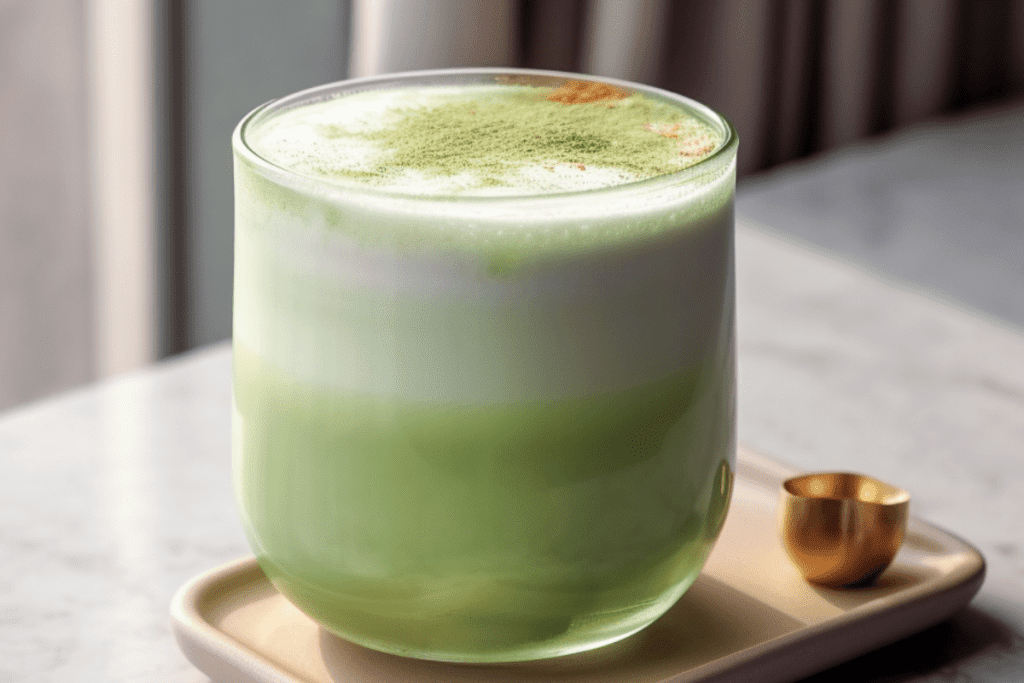
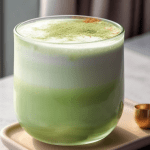
Unleashing the Power of Organic Matcha Green Tea Powder in Your Daily Routine
I still remember the first time I tried it at a small café near my college campus. I was new to this vibrant drink, and the bright green color immediately caught my attention. As I sipped the frothy beverage, I noticed a smooth, earthy flavor with a subtle sweetness that made me feel energized yet calm. That day, I discovered just how special organic green tea powder can be and why it might be the best green tea for anyone looking to enjoy a nourishing and delicious treat.
(milk and honey, matcha latte, japanese green tea powder, matcha cafe maiko)
What is Matcha and How is it Different from Regular Tea?
When I talk about it, I’m referring to a finely ground green tea powder made from shade-grown leaves. While regular green tea is brewed by steeping leaves, we create this product by grinding them into a fine powder, allowing me to drink the entire tea leaf and benefit from its many antioxidants and other nutrients. Because of this, it could provide a more potent dose of vitamins, antioxidant compounds, and amino acids than standard black tea or other varieties of tea
Quote: “I like to think of it as the ultimate form of green tea, since you’re getting everything you need in one cup.”
Below is a quick reference table for common measurement conversions, since I’m often asked things like how many oz to teaspoon or how to convert 12oz to grams

Chef’s Tip: 🍃 Always sift your tea powder before whisking to break up any clumps and achieve a smooth, frothy consistency.
| Measurement | Conversion |
|---|---|
| 12oz to grams | Approximately 340 grams |
| 16oz to ml | About 473 ml |
| 8oz to grams | Close to 227 grams |
| How many tsp in tbsp | 3 teaspoons in 1 tablespoon |
| oz to teaspoon | ~6 tsp in 1 oz (by volume) |
(These numbers can vary slightly based on density and the specific ingredient.)
The Origins and Production
Pro Advice: 🍯 For a touch of natural sweetness, try blending in a little honey—just enough to complement the earthy flavor without overpowering it.
How Matcha is Made: Leaf to Powder
Farmers in Japan primarily grow it, using careful harvest techniques to preserve its flavor and nutrition. They shield the tea plants from direct sunlight for about three weeks before picking. This shading boosts chlorophyll production, giving it a deep green color and a pleasantly vegetal taste. After harvesting, producers steam, dry, and devein the leaves, resulting in “tencha.” They then mill this tencha into the smooth, fine powder we recognize as the final product.
As I learned, the final step of grinding is critical. Traditional stone mills slowly grind the leaves to keep temperature low, preserving green tea powder ’s delicate aromas and l-theanine content. This process transforms the leaves into a powder that dissolves easily when you whisk it into hot water
Why is the Best Green Tea You Can Find
I believe this is the best choice for anyone seeking many health benefits in a single cup. Unlike other tea varieties, this approach involves consuming the entire leaf. That means higher concentrations of antioxidant compounds like EGCG, which can support everything from fat burning to overall heart health. Studies have found that green tea may help reduce the risk of heart disease, thanks to its rich nutritional profile.
When you get the right grade, you’re sipping centuries of tradition and health in one bowl
How Do You Make?
One of the first questions I often hear is: “How to make matcha?” or “How to make matcha latte?” The good news is that it’s not complicated. All you need are a few key tools, hot water, and a little practice. I’ll walk you through my personal routine so you can feel confident the next time you prepare this Japanese tea
Expert Trick: 🍵 Use water around 175°F (80°C). Boiling water can scorch the delicate tea leaves, leading to a bitter taste.
Step-by-Step Guide: How to Make Matcha Latte
I get a lot of questions about whipping up the perfect iced or a warming green tea powder latte on chilly mornings. Let me share my basic steps, which you can adapt to various different recipes—including smoothies, dessert treats like japanese green tea cookies, or even cozy bowls of green tea powder ice cream
- Sift and Measure: Place 2 teaspoons of japanese green tea powder (culinary grade or ceremonial grade, depending on your preference) into a small bowl. Sift it to remove lumps
- Add Hot Water: Gently pour around 2–3 ounces of hot water (not boiling, roughly 175°F) over the powder. Some folks use about 4 grams or 2 grams for a thinner version; it depends on taste
- Whisk Vigorously: Use a bamboo whisk (also called a chasen) to whisk the mixture in a “W” motion until it becomes frothy. This step is essential for traditional preparation
- Add Steamed Milk: Froth some milk of your choice—dairy, powdered milk, or a milk alternative—and pour it into the whisked mixture. If you like it sweet, try milk and honey or a little sugar
- Stir and Enjoy: That’s all! You’ve created a creamy, rich latte
If you prefer a cold version, simply add ice and use cold-frothed milk. I find an iced japanese green tea latte especially refreshing on warm days
The Tools You Need: From Chasen to Frother
When I prepare it, I rely on a few essentials:
- Chasen (bamboo whisk): Key for blending it into a smooth brew
- Frother or milk frother: Perfect if you’re making latte variations
- Ceremonial bowl or small bowl: Ideal for whisking the mixture
- Sifter: Helps create a lump-free texture
I also enjoy exploring new gadgets like electric whisks or a handheld frother, but nothing beats the gentle tradition of a bamboo chasen for capturing that authentic vibe
🔥 Quick Tip: 🥛 If you’re making a latte, froth your milk (dairy or plant-based) for extra creaminess. The added foam gives a coffeehouse-style finish!
Common Mistakes When Preparing Matcha and How to Avoid Them
- Using Boiling Water: This can scorch the tea and create a bitter taste. Opt for hot water around 175°F
- Skipping the Sift: Un-sifted powder can leave clumps in your cup, so a quick sift is vital
- Not Whisking Enough: Proper whisking aerates the mixture, resulting in that creamy, frothy top
- Choosing the Wrong Grade: Culinary grade is best for lattes and baking, while ceremonial grade japanese green tea is ideal for sipping straight
What Does Matcha Taste Like Compared to Other Teas?
Chef’s Tip: 🎋 Invest in a bamboo whisk (chasen). It whips more air into your drink than a metal whisk, resulting in a lighter, velvety texture.
Understanding the Unique Matcha Taste Like
People often ask, “What does matcha taste like?” If I had to sum it up in a word, I’d say earthy. It has a distinct grassy, slightly sweet, and mildly nutty profile, balanced by a creamy finish. This taste like no other tea because you’re consuming finely milled green tea leaves. The presence of l-theanine also contributes to a calmer, smoother sense of alertness
Comparing Matcha to Black Tea and Other Varieties
While black tea can taste robust and bold, this tea is more vegetal and smooth.. Regular green tea has a lighter flavor, since you only steep the leaves. Meanwhile, whisking the entire leaf directly into the beverage results in a richer infusion. This difference is why some call it “green tea on steroids,” though I like to describe it as a concentrated form of tea that offers many health benefits and a unique culinary experience.
Pro Advice: 🌱 Experiment with different grades—ceremonial for sipping straight, culinary for adding to lattes, smoothies, or baked goods.

Contain Caffeine and How Much?
Expert Trick: 🍀 To maintain freshness, store your unopened powder in the freezer or a cool, dark place. Once opened, keep it in an airtight container.
Does Matcha Have Caffeine? The Facts
A common question is, “Does green tea have caffeine?” and more specifically, “Does matcha have caffeine?” The answer is yes. Japanese green tea does contain a moderate amount of caffeine, typically higher than a cup of brewed green tea but less than a strong cup of coffee. Since you’re ingesting the entire leaf, you absorb more caffeine. However, matcha’s l-theanine content helps create a calmer buzz, free of jitters
How Much Caffeine is in Matcha Compared to Coffee?
If you’re wondering, “How much caffeine in matcha?” or “How much caffeine compared to coffee?” let me break it down. Caffeine levels can range from 30 to 70 mg per serving, whereas an 8oz cup of coffee might have around 95 to 200 mg. On average, it contains about 35 mg per gram, though this can vary. So if you use roughly 2 teaspoons of japanese green tea powder, you may be getting around 70 mg of caffeine.
The Impact of Matcha’s Caffeine on Your Health
Balanced with amino acids like l-theanine, this beverage’s caffeine content can offer enhanced focus and energize you without the typical coffee crash. (milk and honey) Some studies suggest it may even support fat burning when combined with a healthy lifestyle. Since I started drinking a cup each morning, I’ve noticed a sustained sense of mental clarity that helps me tackle my day.
What Are the Antioxidant Benefits?
The Many Health Benefits
So, “Is it healthy?” I get this question a lot. It’s renowned for its potential to support overall wellness. People often wonder if is green tea good for you or is it good for you. Because you consume the entire tea leaf, you’re getting more antioxidant power, which can aid in reducing oxidative stress. This is why the benefits often include improved energy, potential health benefits for heart and metabolism, and a sense of calm alertness
Macha and Matcha Benefits: Is Good for You?
“Many people ask, ‘Is matcha good for you?’ as they explore the nuttiness, discover japanese green tea benefits rooted in Japanese tea ceremonies, learn how leaves into a fine powder fit into different recipes, and check the milligrams per serving to maintain balance—so in the end, is green tea powder good for you?”
How Matcha Has Been Shown to Improve Wellbeing
Research indicates that it can promote many health benefits, from helping manage weight to lowering the risk of heart disease. (milk and honey) By consuming green tea, you can glean nutrients like chlorophyll, polyphenols, and vitamins. Each cup might also contain beneficial components that support mood and focus. (milk and honey)
Can Drinking Matcha Daily Boost Your Antioxidant Intake?
I like to drink japanese green tea daily to keep my antioxidant levels high. It’s a simple way to incorporate more beneficial compounds without drastically altering my routine. In fact, studies have found that daily consumption can help maintain overall wellness. Whether you sip on a starbucks matcha latte or prefer a homemade brew, the possibilities are endless
How to Choose the Best Matcha Powder for You
🔥 Quick Tip: 💧 If you prefer an iced version, dissolve the tea in a small amount of warm water first, then stir in cold water or milk and add ice!
Understanding the Different Grades: Ceremonial vs Culinary
When I want to sip it straight, I look for ceremonial or premium green tea powder. But if I’m baking green tea powder cookies, I’ll grab the culinary grade. The difference lies in taste and texture. Ceremonial grade is typically smoother and meant for whisking on its own, while the culinary type can have a stronger flavor that holds up well in lattes and baking.
Below is a simple table outlining the main differences between ceremonial and culinary

| Grade | Flavor Profile | Best Uses |
|---|---|---|
| Ceremonial | Delicate, lightly sweet | Straight sipping |
| Culinary | Bold, slightly bitter | Smoothies, baking, desserts |
Top Brands to Consider: Ippodo Matcha, Marukyu Koyamaen Matcha, and More
There are so many top-notch brands out there. I’ve tried ippodo matcha, marukyu koyamaen matcha, izumi matcha, ryze matcha, kyo matcha, and even specialty shops like cha cha matcha or matcha cafe maiko. If you’re looking for a local option or something recommended by molly yeh, explore different stores and compare taste, aroma, and color. Some individuals also rave about stonemill matcha for a smooth finish.
What to Look for in Quality Organic Green Tea Powder
If you want an organic japanese green tea powder that’s both tasty and safe, keep these points in mind:
- Certified organic labels to ensure minimal pesticide exposure
- Vibrant green hue, indicating freshness with high chlorophyll
- Fine texture without clumps
- Farms where it is grown in shaded conditions
“Always get it from a trusted source,” I say, especially if you’re committed to organic products. (milk and honey)
❓ Frequently Asked Questions (FAQs)
❓ What are the benefits of drinking Matcha?
Matcha is rich in antioxidants, boosts metabolism, enhances focus, supports heart health, and provides a calm, sustained energy without the crash.
❓ What are 5 facts about Matcha?
- 1️⃣ Matcha is made from shade-grown green tea leaves.
- 2️⃣ It contains more antioxidants than regular green tea.
- 3️⃣ Matcha provides L-theanine, which promotes relaxation.
- 4️⃣ It has been used in Japanese tea ceremonies for centuries.
- 5️⃣ Drinking Matcha can support brain function and fat burning.
❓ How many carbs are in 1 cup of Matcha tea?
One cup of pure Matcha tea contains less than 1 gram of carbs, making it a great low-carb, keto-friendly beverage.
❓ Is Matcha natural or manmade?
Matcha is natural! It comes from green tea leaves that are carefully grown, shade-dried, stone-ground, and processed into a fine powder.
Conclusion
For me, discovering this vibrant tea opened a whole new world of flavor and wellness. From sipping a classic matcha latte at home to experimenting with ice cream or stirring powdered green tea into my smoothies, I’ve found there are countless ways to enjoy it. When I realized it is a Japanese green tea powder made by carefully grinding whole leaves, I saw why it’s considered so special. Mixing the powder into hot water, creating that frothy texture with a matcha whisk, and indulging in the naturally sweet, mildly earthy taste is an experience all its own. (milk and honey)
Embracing the Taste and Benefits
If you’d like a great cup of matcha tea, remember that japanese green tea does contain caffeine, so start with smaller amounts and see how your body reacts. The health benefits are impressive—it provides l-theanine, antioxidant properties, and can help energize you without the harsh crash of coffee.
Key Takeaways:
- What is matcha? It’s a Japanese tea that requires shading, harvest, and careful milling
- How to make matcha: Sift matcha powder, add hot water, then whisk until frothy
- Does matcha have caffeine? Yes, but it’s balanced by l-theanine
- Matcha contains the entire tea leaf, giving it many health benefits
- Drink matcha daily if you want to boost your antioxidant intake
“Once you’ve tasted quality organic matcha, you may never go back.”
If you’re a fan of culinary exploration, you might also enjoy these healthy recipes:
- Chocolate Covered Strawberries
- Smoothie Recipes
- Corn Tortilla
- Protein Pancakes
- Sugar Free Ice Cream
- Protein Cookies
- Or explore even more Healthy Recipes
Whether you’re measuring 16oz to ml, wondering how many tsp in tbsp, or simply exploring clevr and starbucks matcha drinks, I hope this guide helps you appreciate why japanese green tea organic green tea stands out in the green tea universe. (milk and honey) From matcha latte near me at starbucks matcha latte to whisking your own at home, now you have everything you need to enjoy. (milk and honey)
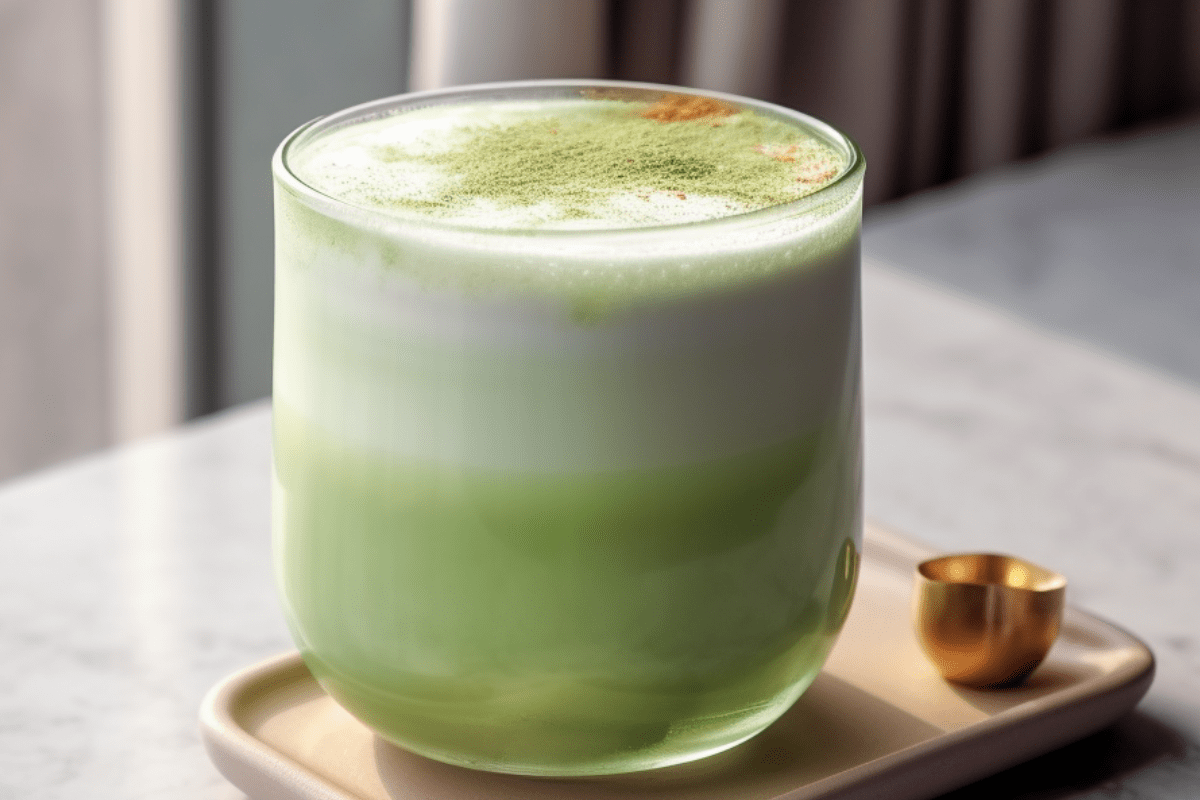
Creamy Matcha Latte with Milk and Honey
Ingredients
- 1 teaspoon 2 g matcha powder (culinary grade)
- 2 fl oz about 60 ml hot water (approximately 175°F / 80°C)
- ¾ cup about 180 ml milk (dairy or plant-based)
- 1 tablespoon milk and honey or sweetener of your choice
Instructions
- Sift the matcha: Pass the japanese green tea powder through a fine sieve into a small bowl to eliminate clumps.
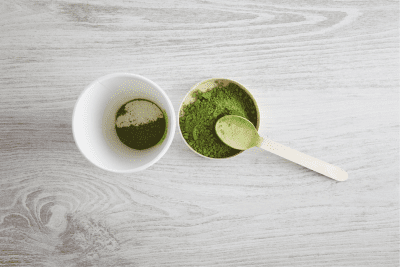
- Add hot water: Carefully pour the hot (not boiling) water over the sifted matcha.
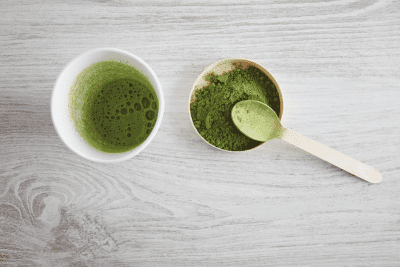
- Whisk until frothy: Use a bamboo whisk (chasen) or handheld frother to whisk vigorously in a “W” motion, creating a light foam.
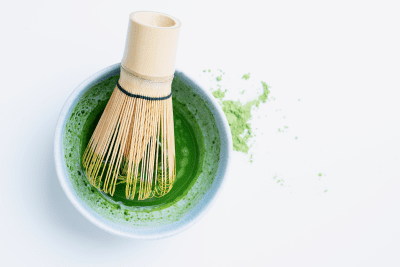
- Warm the milk: Heat the milk in a small saucepan or microwave, avoiding boiling.
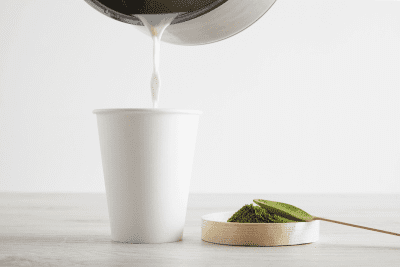
- Combine and sweeten: Pour the warmed milk into the whisked matcha and stir in milk and honey (or your preferred sweetener) to taste.
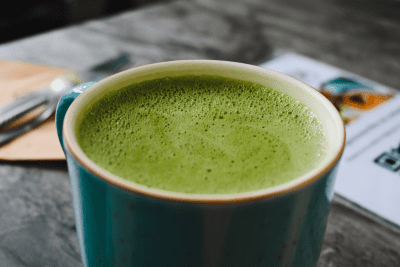
- Optional – Iced version: For a chilled latte, add ice cubes to a glass and use cold-frothed milk instead of warm milk.
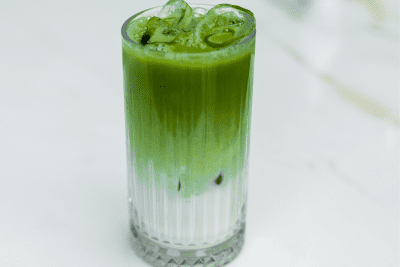
Video
Notes
- Adjust the amount of matcha powder based on your flavor preference—use less for a milder taste or more for a stronger matcha flavor.
- If lumps remain, sift the matcha powder again or whisk longer.
- Whole milk or a rich plant-based alternative (like oat milk) will yield a creamier texture.
Nutrition
Nutrition Disclaimer
The Chef Marcy is not a dietician or nutritionist, and any nutritional information shared is an estimate. If calorie count and other nutritional values are important to you, we recommend running the ingredients through whichever online nutritional calculator you prefer. Calories can vary quite a bit depending on which brands were used.


Thank you so much for this post! I’ve been curious about matcha for a while, but always felt a little overwhelmed by all the info out there. You explained everything so clearly—from the health benefits to how to actually prepare it without messing it up! I tried it this morning with oat milk and a bit of honey… and wow, I get the hype now. It gave me a calm energy that coffee never does. Definitely making this part of my daily routine! 🍵💚